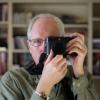The case for exposure control
-
Recently Browsing 0 members
- No registered users viewing this page.
-
Similar Content
-
- 3 replies
- 1,030 views
-
- 2 replies
- 309 views
-
- 12 replies
- 594 views
-
- 7 replies
- 304 views
-
Q3 exposure issue. 1 2
By Igster,
- 32 replies
- 4,943 views
-


Recommended Posts
Join the conversation
You can post now and register later. If you have an account, sign in now to post with your account.
Note: Your post will require moderator approval before it will be visible.